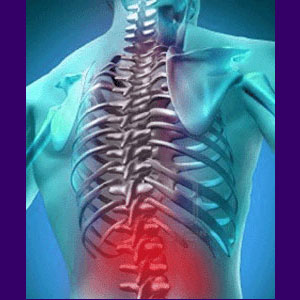
Lower back pain exercises are some of the most common and widely utilized therapy techniques for overcoming regional lumbar symptoms. Of course, in order for exercise to actually resolve painful issues permanently, the underlying source of symptoms would have to be a deficiency in the ability of the involved muscles to function properly and support the spine during physical activity. In my experience, this is virtually never the case, so exercise therapy usually provides nothing more than a good workout and sometimes, temporary symptomatic relief.
This discussion centers on exploring the benefits and limitations of exercise therapy, when used specifically to treat low back pain.
Lower Back Pain Exercise Facts
How many of you have been totally 100% permanently cured of lower back pain using exercises alone? Anyone? No, I think not. Maybe a handful of patients with extenuating circumstances have seen truly positive outcomes.
The rest of you are still doing those back exercises hoping that someday the pain will go away and stay away, instead of coming back time after time. Sound familiar? Yeah, I know… Been there, done that myself.
Exercise is healthy for the body, but is not a cure for back pain in usual cases. Exercise may provide temporary relief for some and exacerbate pain in others. Here’s why…
Lower Back Pain Exercises Effectiveness
For patients who experience temporary relief of lower back ache using exercise therapy, the cause of symptoms is often ischemia. Exercise increases regional circulation, providing short term relief from oxygen deprivation back pain, which is one of the most common of all lasting dorsopathy complaints. If a structural issue has been determined to be the source of pain (herniated disc, osteoarthritis, for example), exercise is unlikely to provide this constant temporary relief. This occurrence is helpful in recognizing possible cases of misdiagnosis.
After all, try to imagine how else exercise will actually work to treat spinal arthritis or a herniated disc, for example. Will it repair the disc structure and make the nucleus magically go back into the annulus? Will it eliminate bone spurs and rebuild deteriorated synovial capsules in the spinal joints? Nope. Not a chance.
For patients whose pain is worsened through exercise, it is more complicated. The first reason may entail an actual structural spinal abnormality which is definitely aggravated thorough certain postures or movements. However, many patients with psychosomatic back pain also demonstrate a distinctive physicophobia, in which they become truly afraid to move or else hurt their backs. In these cases, the pain comes on in response to fear and conditioning, rather than any anatomical reasoning.
Exercises for Lower Back Pain Advisory
Back exercises, like all forms of exercise, are good for the body, but not effective as stand-alone back pain treatments in the vast majority of patients. My advice is to first beat the pain, then use exercise as a method of keeping your body in good shape. Depending on exercise alone to cure your pain will likely prove to be a disappointment according to research statistics.
If exercise alone does work for you, then you are extremely lucky or have mistaken coincidental exercise success with the simple passage of time, which often relieves many types of pain by itself. The reasoning for good results may be a muscle imbalance which needed to be corrected or a muscular deficiency issue.
In many cases, people will get relief for a few months from exercise, since their dedication works as a fantastic placebo treatment. However, in cases of psychogenic conditions, eventually the symptom imperative becomes too strong and the pain returns.
So, the bottom line on exercise therapy is a mixed bag. It is great for you, but maybe not a great treatment, per se. If it works for you without drugs or surgery, then fantastic! You beat the statistical odds for most diagnoses. If it makes things worse, then you are right back to the drawing board.
One thing is for sure… If you want to try exercise to treat your lower back pain, you should definitely consider using the services of a qualified fitness trainer, or better yet, a physical therapist.
We have discovered that exercises are effective part of a total mindbody health program, but not nearly as good as a stand alone cure. Therefore, we integrated a simple and highly effectual exercise plan into our 3 tier proprietary pain relief program.





